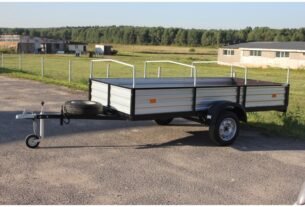Those who must prescribe the right capacitor bank for each electrical installation are becoming more and more familiar with the special features of power factor correction in networks with high harmonic distortion levels, both in voltage and current. In general, most firms that make automated capacitor banks include devices in their catalogues that are designed to be used in networks with a specific amount of harmonic distortion. CIRCUTOR, in particular, provides a comprehensive range of automatic capacitor banks with contactor and thyristor operation, as well as fixed compensation units with rejection filters (also known as detuned filters) tuned at 189 Hz (in 50 Hz networks), corresponding to an overvoltage factor of p = 7%.
This 189 Hz tuning frequency is CIRCUTOR’s default choice; it provides a suitable and effective solution for the vast majority of installations requiring a capacitor bank with detuned filters, ideal when faced with order 5 harmonics (250 Hz in 50 Hz networks) or higher, which are typically produced by the most common sources of harmonic currents, i.e. three-phase loads equipped with a 6-pulse bridge rectifier at their input: variable speed drives or frequency variators, etc. The solution to this question necessitates a quick review of the detuned filter’s operation. When we examine the impedance-frequency diagram of a reactor-condenser unit with p = 7% (Fig. 1), we can see that the lowest impedance is at 189 Hz, and the impedance gradually increases on both sides, with the peculiarity that the impedance is capacitive for frequencies below 189 Hz and inductive for higher frequencies. However, the value of this impedance at various harmonic frequencies, as well as the short-circuit impedance value at the capacitor bank’s network connection point (Xcc at PCC), are both critical for the detuned active filter to function properly.
Installations with low short-circuit power in the High Voltage distribution lines at the low voltage network connection point; or those fed by a power transformer whose K-factor value (harmonic overload factor) is by default unsuitable for the harmonic contents of the loads it is supplying; or those fed by a power transformer whose K-factor value (harmonic overload factor) is unsuitable for the harmonic contents of the loads it is supplying, or there are long cable sections between the transformer output and the capacitor bank. In addition to this impact, networks with low Scc values typically exhibit high harmonic distortion levels (THD(U) in the case of strong harmonic current circulation, which leads to an increase in the harmonic current absorbed by capacitors.
In other words, any solution that stops an installed capacitor bank from impacting the network, and therefore from being impacted by the existence of harmonics in the network, may not necessarily address the problem, with all of the technical and financial ramifications it entails. After considering the foregoing, the best conclusion from those considered would be CIRCUTOR’s standard, frequent recommendation to analyse, whenever possible, any installation requiring the use of a capacitor bank, to eliminate any doubts or fears we might have about the possible effects of harmonic distortion in the network; an analysis that gives us the information required to make the right, safe choice of the most appropriate device.








